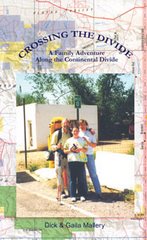Trying to eat right and pack light while backpacking can be challenging. On extended long distant hikes, as when I hiked the CDT and the GDT, menu selection takes on a new dimension—variety. Everyone develops their own personal meal choices and often it takes many trial trail concoctions to settle into a nutritious and desirable assortment of food items that keep you going and make you happy.
My first meals were not my last. I tried many ideas before I settled into a normal routine of meals that seemed to work for me. Let me first discuss some of my mistakes. Long-distance hiker Ray Jardine’s suggested in one of his books that corn pasta packed a punch and he would even eat it cold on the trail. I bought a case of the stuff. I learned quickly that I hate corn pasta, I would not only refuse to eat it cold I wouldn’t eat it hot or sprinkled on top of a New York strip. I couldn’t even get my squirrels to eat the stuff.
After meeting Laura and Leslie on the trail I learned that they would eat mostly couscous . It’s not that I dislike pasta I just didn’t care for it the size of buckshot. Andy ate a lot of black beans. These are all great choices if they appeal to you, but I’m a meat and potato Irishman. I’m a vegetarian in a way. Cows eat grass, and I eat cows.
No I didn’t carry T-bones in my back. The only meat I carried consisted of ham or beef sandwiches the first day back on the trail after a town stop and one freeze-dried meal a week, usually sweet and sour pork.
Everything get old after awhile. I love Ritz-Bits, put after a month of them they lose some appeal. When I first started across the high desert of New Mexico my body was breaking into the new routine of hiking hard all day. Though I carried over a pound of food for each day out, I often came in to town stops with many food items not touched. For whatever reasons I had little appetite. Few things seemed appealing. It was part of the reason for losing 30+ pounds the first few weeks on the trail.
The menu I developed during the months of hiking the Continental Divide consisted of things like Helper Meals without the meat. Mostly pasta and sauce packages such as Hamburger Helper, Tuna Helper, Chicken Helper. I used tortilla for bread and often made burritos with packaged, dried, refried bean mixes. I discovered a company in El Paso called Old El Paso. Their dried refried bean mix is used by thousands of restaurants around the country. Just adding hot water makes wonder bean mix. It made a tasty and fulfilling meal, delivering a real energy punch—you just didn’t want to be hiking behind me.
Breakfast consisted of maple flavored oatmeal, powdered milk on dry cereal or breakfast fruit bars. Powdered milk does not appeal to many people but it’s not bad if you mix it with mountain stream water so cold you can chew it.
I would eat breakfast and dinner and snack all day. Snicker bars, Oreo’s, Cashews, Crackers, Nutella and various trail mixes. Preparing for the trip I found power bars at a Walmart that had been reduced in price several times. I bought one to test. I figured if no one was buying them they must really be nasty. I went out in the parking lot and munched on it awhile. It was really good. I went back into the store and bought the whole shelf. I took well over a hundred power bars to the check out counter and the woman at the cash register started scanning each bar individually. I said, "I know Sam Walton must have equipment that can scan one barcode and multiply it by 150." She assured me that the way she was doing it was the way she was trained.
I started out each segment of the trail with two bottles of GatorAid. These two bottles would become my water bottles as I slowly drained off the contents. For hot drinks I would use mixes such as specialty coffee and Tang.
I had my experiments with instant potatoes, gravy mixes and powdered puddings, but often they were more hassle than they were worth. I settled for quick and easy meals that had the most appeal and thought of them as fuel instead of cuisine.
I am not suggesting that is the way it should be. I continue to experiment with trail food and new items now available in most grocery stores. Meat in foil pouch containers have added greatly to my Helper meals. I now use a metal grid in the bottom of my cooking pot called a BakePacker. This allows me to steam bake many wonderful meals in a quick, easy, no mess fashion. Everything goes into an oven bag and the pot stays perfectly clean.
When I am long-distant hiking I do not take extended meal breaks. I never eat where I sleep. I usually cook a meal in the late afternoon and hike for several hours before I make camp. Cooking consists basically of boiling water and adding dry ingredients.
With enough trail and error a backpacker can achieve a well balanced menu that both satisfies the palate and the bodies energy needs. The rule of thumb most bandied about in the hiker community is two pounds of food per day for high mileage hikers. I have never carried that much food. I do lose weight on long hikes but I try to make up for light meals when I make a town stop. I graze all the time I’m off the trail and dream about grazing all the time I’m on the trail. I have never heard of a backpacker starving to death. I have run out of food two days out and I have to say, "I didn’t enjoy it." But I knew I was not the first go without food for 48 hours. Like many other situations in life, you suck it up and keep moving. MALLERYBOOKS.COM
Wednesday, May 9, 2007
Subscribe to:
Post Comments (Atom)












No comments:
Post a Comment